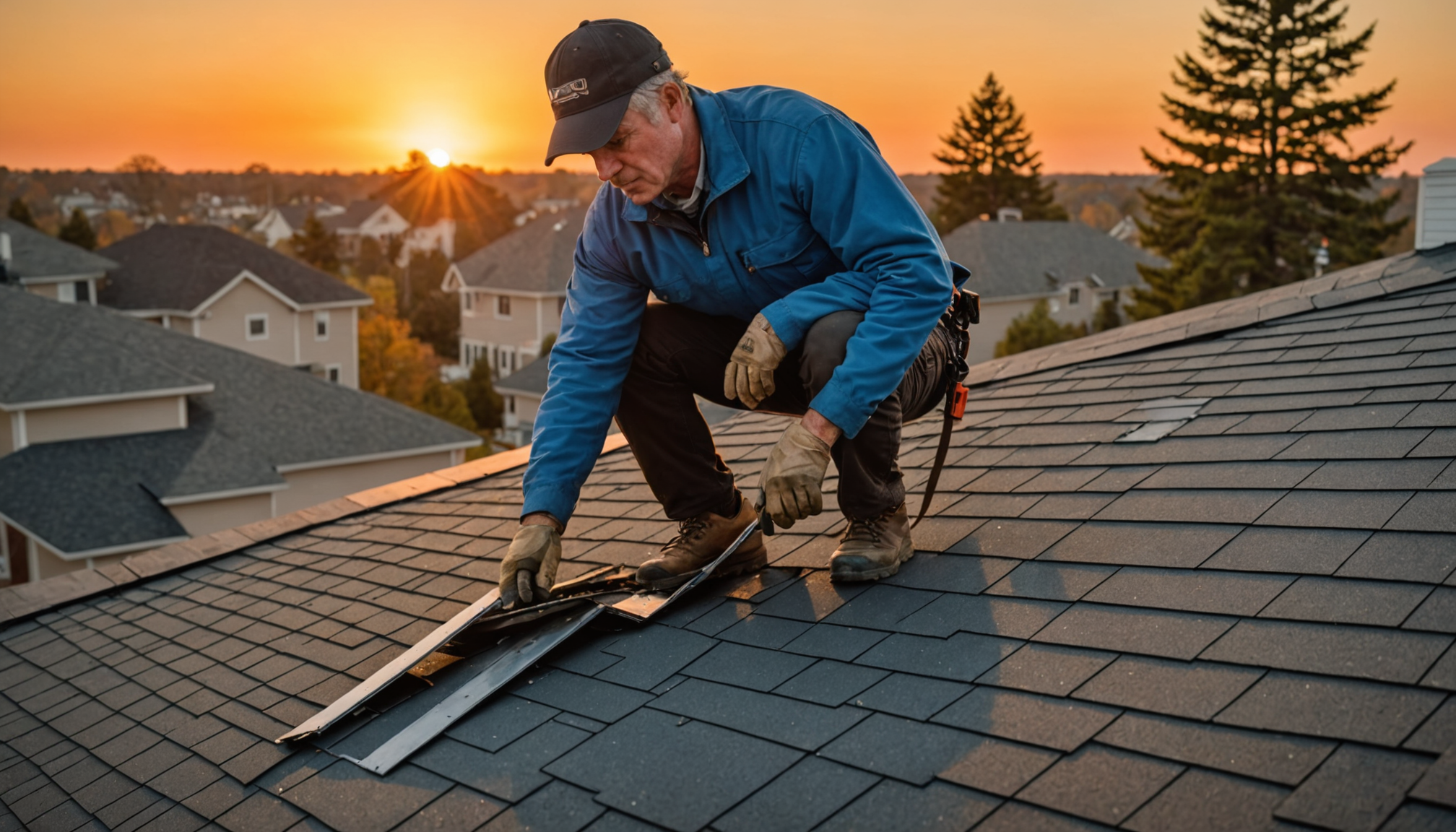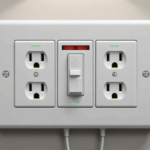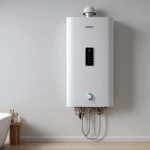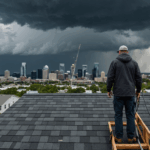According to the National Weather Service, Orlando experiences an average of 45-50 inches of rainfall annually, making roofing integrity crucial for hurricane preparation. A comprehensive inspection of your roof’s structural components and shingles should be your first priority when preparing for hurricane season, which officially runs from June 1 to November 30.
Start by examining your shingles from ground level using binoculars to spot any obvious issues. Look for curling, buckling, or missing shingles – according to the National Roofing Contractors Association, these are early warning signs that your roof may not withstand severe weather conditions. Professional roofing inspectors in Orlando report that approximately 60% of storm-related roof failures could have been prevented through proper maintenance and early detection of these issues.
- Check for loose, damaged, or missing shingles
- Look for signs of granule loss in gutters or at downspouts
- Inspect for sagging areas or visible dips in the roofline
- Examine the soffit and fascia for rotting or damage
The Florida Building Code requires specific wind resistance ratings for roofing materials in Orlando, with most areas requiring shingles rated for at least 130 mph winds. If your roof is over 15 years old, consider having it professionally evaluated, as older materials may not meet current standards. The Insurance Institute for Business & Home Safety reports that roofs installed before 2001 are particularly vulnerable to hurricane damage.
For thorough assessment, carefully inspect the decking from your attic. Look for any spots where daylight shows through the roof boards, as these indicate potential weak points. During hurricane season, even small vulnerabilities can lead to catastrophic failures. Studies by the Federal Emergency Management Agency (FEMA) show that roof damage is responsible for up to 80% of residential hurricane damage costs.
Document any issues you find with photographs and detailed notes. If you discover multiple problem areas or your roof is approaching the end of its expected lifespan, consult with a licensed Orlando roofing contractor who specializes in hurricane-resistant installations. Remember that Florida state law requires roofing contractors to be licensed and insured, so always verify credentials before hiring.
Gutter system and drainage assessment
A well-maintained gutter system is crucial for Orlando homes during hurricane season, when intense rainfall can overwhelm poorly maintained drainage systems. Professional roofing inspectors recommend checking your gutters at least twice a year, with additional inspections after major storms. During hurricane prep, ensure all gutters are firmly attached to the fascia board and properly aligned to direct water away from your home’s foundation.
Clean out any debris, leaves, or accumulated granules from your gutters and downspouts. According to local Orlando contractors, clogged gutters can cause water to back up under shingles during heavy storms, leading to interior damage and compromising your roof’s integrity. Pay special attention to gutter joints and seams, as these are common failure points during extreme weather conditions.
Downspouts should extend at least 4-6 feet away from your home’s foundation. Consider installing downspout extensions or splash blocks to prevent soil erosion and foundation problems. During inspection, check that all downspouts are securely fastened to the house and that underground drainage systems, if present, are clear and functioning properly.
Water tests can help identify potential drainage issues before hurricane season arrives. Using a garden hose, run water through the gutter system to check for proper flow and identify any leaks or overflow points. Studies show that properly functioning gutters can manage up to 12 inches of rainfall per hour – a crucial capacity during Florida’s intense storm seasons.
- Inspect gutter brackets and hangers every 3-4 feet for secure attachment
- Check downspout connections and ensure they’re directing water at least 4-6 feet from the foundation
- Look for signs of standing water or improper gutter slope
- Test underground drainage systems for proper water flow and clearance
Flashing and sealant examination
One of the most critical yet often overlooked aspects of Orlando roof inspections involves the proper examination of flashing and sealants. Homeowners frequently underestimate the importance of these components, leading to preventable water intrusion during hurricane season. Local roofing experts report that approximately 90% of roof leaks occur at flashing points rather than in open roofing areas.
A common mistake is assuming that old caulking is still effective just because it’s present. Deteriorated sealant around vents, chimneys, and other roof penetrations can fail during severe weather, even if it appears intact from a distance. Professional inspectors recommend replacing any sealant that shows signs of cracking, peeling, or discoloration, regardless of its age.
Many homeowners also overlook the importance of proper flashing installation angles. Incorrectly installed step flashing along walls should slope downward to direct water onto the roof surface rather than behind the flashing. During hurricane prep, check that all flashing pieces maintain proper overlapping patterns – upper pieces should always overlap lower ones by at least 2-3 inches.
Another frequent oversight is neglecting to inspect valley flashing, where two roof slopes meet. These areas handle significant water volume during storms and require special attention. Look for:
- Rust spots or corrosion on metal flashing
- Loose or missing nails in flashing materials
- Gaps between flashing and roofing materials
- Cracked or separated sealant around roof penetrations
Many DIY enthusiasts make the mistake of using standard caulk instead of proper roofing sealant. Always use high-quality polyurethane or silicone sealants specifically designed for roofing applications. According to local contractors, improper sealant choice is responsible for approximately 30% of flash-related failures during severe weather events in Central Florida.
Additionally, avoid the temptation to simply add new sealant over old material. This common error creates weak points that can fail during hurricane conditions. Instead, completely remove old sealant before applying new material, ensuring proper adhesion and water resistance.
Attic ventilation and water damage signs
Proper attic inspection serves as your early warning system for potential roofing problems that could worsen during hurricane season. In Orlando’s climate, adequate ventilation plays a crucial role in maintaining your roof’s integrity and preventing moisture-related issues that can compromise your home’s structure during severe weather.
Start by examining your attic space on a sunny day with the lights off. Look for any visible light penetrating through the roof boards, which could indicate holes or damaged shingles. Check for dark stains, water marks, or discolored spots on the underside of the roof decking, as these are telltale signs of existing leaks that require immediate attention.
Monitor your attic’s temperature during peak heat hours. If it feels excessively hot compared to the outside temperature, this could indicate poor ventilation. According to building experts, proper attic ventilation can reduce temperatures by up to 40 degrees, significantly decreasing the risk of moisture accumulation and extending your roof’s lifespan.
Key areas to examine include:
- Mold or mildew growth on roof sheathing
- Rusted nail heads protruding through the roof deck
- Sagging or warped roof decking
- Wet or compressed insulation
- Blocked soffit or ridge vents
Pay special attention to bathroom and kitchen vent terminations in the attic. These should extend fully through the roof, not just into the attic space. Improperly vented moisture can lead to severe damage during hurricane season when high humidity levels are already a concern.
Local building codes require a minimum of 1 square foot of ventilation for every 150 square feet of attic floor space. During hurricane prep, ensure all vents are properly sealed yet unobstructed. Consider installing hurricane-rated ridge vents or turbines that can withstand high winds while maintaining necessary airflow.
Regular moisture readings can help detect problems before they become severe. Investment in a quality moisture meter can help track potential issues throughout the season. Readings above 20% warrant immediate professional inspection, as they indicate conditions conducive to wood rot and structural weakening.
Remember to document any findings with photographs and maintain a log of observations throughout the season. This documentation can be invaluable for insurance purposes and helps track the progression of any developing issues. Professional roofing inspectors in Orlando recommend scheduling attic inspections at least twice yearly, with additional checks following any severe weather events.
Storm protection features and upgrades
When preparing your Orlando home for hurricane season, enhancing your roof’s protective features can significantly improve its resistance to severe weather. Installing hurricane straps or clips is a crucial upgrade, as they create a continuous load path from the roof to the foundation. The Florida Building Code now requires these connections for new construction, capable of withstanding wind uplift forces of up to 150 mph.
Impact-resistant shingles have become increasingly popular among Orlando homeowners during hurricane prep. These materials are tested to withstand impacts from wind-driven debris and typically carry warranties specific to hurricane conditions. Local roofing contractors report that homes with impact-resistant materials experience approximately 40% less damage during severe storms.
- Install secondary water barriers beneath shingles
- Upgrade to six-nail installation patterns for enhanced wind resistance
- Add gable end bracing in the attic
- Consider hurricane-rated ridge vents
- How often should I have my roof inspected for hurricane readiness?
- Professional roof inspections should be conducted twice yearly in Orlando, with one specifically before hurricane season begins. Additional inspections are recommended after any severe weather events or if you notice visible damage.
- What’s the most cost-effective storm protection upgrade for my roof?
- Installing hurricane straps or clips provides the best value for storm protection, as they significantly improve your roof’s wind resistance. This upgrade typically costs between $800-1,500 but can prevent catastrophic roof failure during hurricanes.
- Should I replace my entire roof if it’s only partially damaged?
- The decision depends on your roof’s age and the extent of damage. If your roof is over 15 years old or shows multiple signs of wear, a complete replacement might be more cost-effective long-term. Always consult with a licensed roofing contractor for professional assessment.
- Can I install hurricane protection features myself?
- Most hurricane protection features require professional installation to ensure proper function and code compliance. DIY installation could void warranties and potentially compromise your home’s safety during storms.
- How do I know if my current roof meets hurricane-resistant standards?
- Check your roof’s installation date and documentation for wind rating information. Roofs installed after 2001 in Orlando should meet higher wind resistance standards. A professional inspection can verify if your roof meets current hurricane-resistant requirements.











